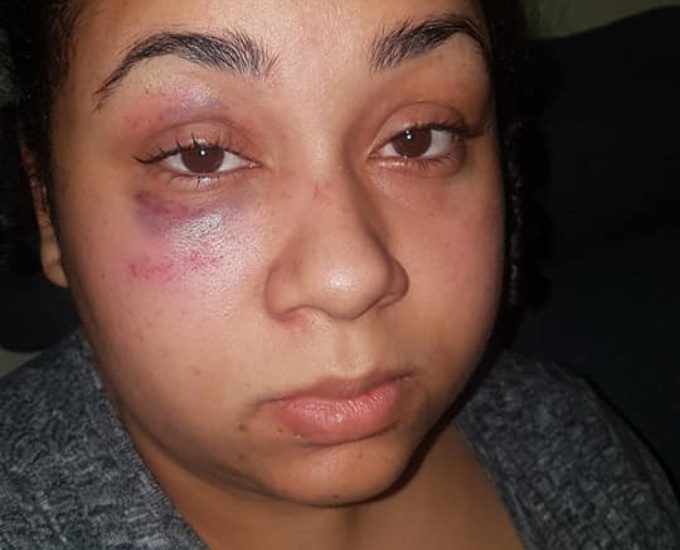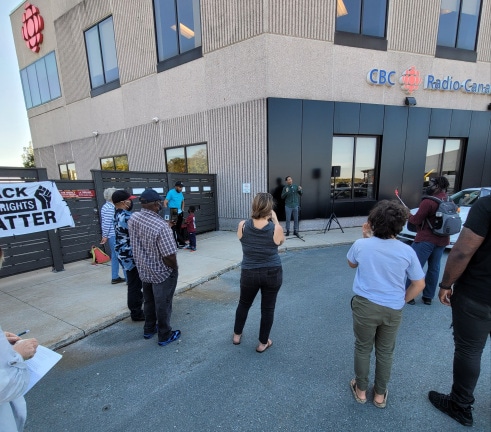KJIPUKTUK (Halifax) – An online roundtable discussion late last week asked the question how Nova Scotia media contributes to racism and oppression.
As Lynn Jones in her introduction explained it, the focus was not just on how biased media coverage impacts communities, but also how communities can organize and push back.
Observations that came out of the discussion will be reflected in a document that can serve to educate and change Nova Scotia’s mainstream media for the better.
Portia Clark, Matthew Byard, Kyah Sparks, Desmond Cole and Robert Wright were panelists, El Jones moderated and Dr. Lynn Jones introduced the topic and set the parameters. Another 60 or so people tuned in to listen and add their voices.
Not a pretty picture
So how does this racism manifest?
In too many ways to count, based on the responses that came from the panel members and the participants adding their 2 cents through the chat option.
For one, there are the suggestive headlines and photos that reinforce racist stereotypes before you even get around to reading the story.
See also: Op-ed: The myth of North Preston’s Finest
There are the stories that aren’t being told, but should be. One example offered up is that not everybody in the Black community agreed with the way the Africville settlement and the city’s apology was doled out at the time.
“When you read it in the newspaper, there was one mention that said, there were some people dissenting in the back, but that was it,” Byard said.

Then there’s a subtle racism that influences how stories are being told. A report on Santina Rao’s court case reports that Santina says that the assault by police during her arrest left her with bruises, a black eye, and a concussion. ‘Says’, as if that is just her side of the story, rather than the self-evident objective truth for all to see.
Black journalists remain underrepresented in news rooms in Nova Scotia, where too often young Black journalists are told they have no realistic hope to advance.
“I want to tell my stories, but I don’t get the chance,” one young journalist said. “These are the stories that come back to me. And it is so frustrating and hurtful for me, because I want to tell these stories.”
Being one of the few Black journalists in a mostly white newsroom brings its own unique pressures, particularly when reporting on issues that directly affect the Black community.
“Since George Floyd we finally had an opportunity to be heard, which was really positive. But it was also difficult as a (Black) journalist to be right at the center of that, and perhaps have some people listen to me and to our coverage for bias perhaps, or for emotion, but also as a guide to what was a really complex and difficult time for people,” was how one journalist put it.
“I feel that we bear more responsibility than maybe some of the other folks in the newsroom, and we care more when we get something wrong, when we misrepresent, or when our story idea doesn’t make it through the story pitch,” they said.
Although white journalists and media types were in the audience, they remained by and large silent. This was disappointing. There is a fine balance between monopolizing a discussion that isn’t yours and speaking out. However, the almost complete silence reinforced the notion that racism in the media isn’t really for white people to fix.
See also: Anti–Black racism in Nova Scotia is white people’s problem
How to respond
The evening wasn’t just about the challenges the Black community faces. Many speakers had ideas on how to respond when confronted with media showing its anti-Black bias.

One way to respond is to take charge. Black Nova Scotia News is a popular facebook group. The group’s administrator, Matthew Byard, posts media reports on a wide variety of issues affecting the Black community that are then widely commented on. These comments often provide additional insights and context that the original report missed. As Byard said, there is always more to the story.
Black Nova Scotia News also a site where news is discussed before mainstream media gets a chance to put its particular spin on it. It’s where you could read about the teenager beat up by a cop in Bedford, days before the assault made the news.
Robert Wright spoke about how to deal with the media if you are interested in getting a message out, and getting it out correctly. Wright emphasized the importance of building a relationship based on trust with one or more journalists. “If there’s someone that you’ve cultivated a relationship with, someone who has benefited from their relationship with you, they’ll tend to give you a little more time to tell your story and clarify your story,” Wright said.
As well, always make sure your message is clear and concise, and don’t get frazzled but stick to that one message, Wright added.
Community pressure is yet another important component in the fight for better journalism.
“They can ignore one journalist, but they can’t stop the entire community when the community wants something done. We’ve been hard done by the media for a long time. It’s time for us to take our rightful place, as journalists and in some cases as overseers,” a Black journalist said.
Raymond Sheppard is an African Nova Scotian elder and activist who for many decades has fought for proper representation in the mainstream media. His main focus has always been the CBC, because it is publicly funded. This summer he organized a Black Voices Matter rally at the CBC building.
See also: Raymond Sheppard: Black voices matter, a message for the CBC
“We have a right to take what’s ours, we have a right to not just ask for changes, but to demand them If you ask, people just say no. We must make a concerted effort to demand what is rightfully ours, Sheppard said.
With a special thanks to our generous donors who make publication of the Nova Scotia Advocate possible.
Subscribe to the Nova Scotia Advocate weekly digest and never miss an article again. It’s free!



